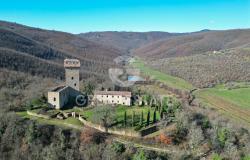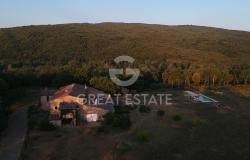Basilicata, Calabria and Puglia form the famous boot of Italy and between them boast an extraordinary wealth of history, culture and art.
Basilicata
Basilicata is situated between the "heel", Puglia, and the "toe", Calabria, of the boot, and two short coastlines in the Tyrrhenian Sea in the southwest and in the Gulf of Taranto in the southeast. The region is rich in Greek ruins, Norman Castles and medieval abbeys.
Potenza is the capital of the region, with its rich history made evident through the main churches and monuments of the region, such as the Cattedrale di S. Gerardo and the Chiesa di S. Michele dating back to the 12th century, and Chiesa di S. Francesco and Chiesa di S. Maria del Sepolcro from the 13th century. Another centre of major attraction in Basilicata is Matera, famous for the caves where people used to live in dwellings created by cutting through the rock.
The regional economy is largely based on agriculture with crops of citrus fruits, grapes, olives, vegetables and cereals. Moreover, some typical local products such as mushrooms, truffles and medicinal plants are also becoming important sources of income, and sheep and goat farming is performed on a large-scale. Industrial development is limited, though there are still some flourishing crafts sectors, such as ceramics, woodwork and textiles.
The FIAT automobile plant at Melfi is one of the most modern in Europe and famous among industrial conglomerates. The Region produces hydroelectric energy and deposits of natural gas and oil were recently discovered, making Basilicata one of the most dynamic regions in the south of Italy.
Basilicata also boasts wines and foods that have been appreciated since ancient times. Among the finest products of the region are the sausages known as "ucanica" or "luganega", which can be eaten fresh, cured, or preserved in oil. Then there are the "soppressate", pork sausages dried and then preserved in extra virgin olive oil. Other treasures of the region are the "pezzenta", made from slices of pork, and its many cheeses: pecorinomade from goat's milk and casiddi and caciocavallo made from milk derived from from the Podolica breed of cows.
Basilicata also produces part of the Caciocavallo Silano DOP. Finally, also worth a mention are the manteca, a creamy pasta filata cheese with a filling of butter, and the burrino farcito, filled with butter and salame.
Basilicata produces one DOC wine of increasingly better quality. Historically, there were no native grapes in this region, and the now local Aglianico plant was actually brought over by the Greeks and, therefore, this grape was turned into wine long before many native varieties in the northern regions. The Greeks planted vines around the Mount Volture, from where some of the best Aglianico still comes today, and the DOC Aglianico del Volture, was named after the area.
Calabria
Calabria is a charming fusion of mountains and wonderful coastline scattered with Greek ruins and beautiful hill-towns. With the Pollino chain in the North, the Sila forested plateau in the centre and the Serre and Aspromonte chains in the South, the region is a 250km-long peninsula at the southernmost point of Italy lying between the Tyrrhenian and Ionian Seas.
Cattanzaro, the capital of Calabria, rises on a rock and is split into two parts by the steep Fiumarella valley, the two sections being connected by a huge concrete steel bridge (the Viadotto Morandi), among the highest in Europe, built in 1960 on a design of architect Riccardo Morandi. The beach town Catanzaro Lido, located about 5 kilometers south, has a wide promenade and a harbor for small fishing and pleasure boats. Reggio Calabria was the the capital of the region until 1970 and lies at the foot of the Aspromonte, at the far end of the Italian peninsula on the right shore of the Strait of Messina. Destroyed in 1908, the city was later rebuilt using anti-seismic criteria to an orthogonal plan. The Duomo was rebuilt in Romanesque style, with interesting works of art while the Castle of medieval origin was only partly ruined. Also of artistic relevance are the church of the Ottimati and the Madonna dell'Eremo Sanctuary. The Museo Nazionale della Magna Grecia hosts a fine collection of Greek artifacts, among which the famous Bronzi di Riace, the Greek bronzes are two status of warriors found out at sea off the Marina di Riace in 1972. Other cities are Cosenza, Tropea, Vibo Valentia and Crotone
The economy of the region is still largely based on agriculture and the region is a major producer of citrus fruit, led by the IGP Clementine di Calabria, and the area also produces oil, wheat and wines. Its forests provide wood for building, and chestnuts. Industry is relatively developed in the building and construction sector and, in Arcavacata di Rende (Cosenza), there is also an excellent membrane technology research centre.
The red onions of Tropea, a town on the Tyrrhenian coast, are renowned for aroma and flavor. The lofty Sila range between Cosenza and Catanzaro abounds in mushrooms, including the prized porcini. The region is famous for its cuisine and the predominant use of peperoncino, chilly, in the preparation of traditional dishes. Pork is preserved as ham, salame and sausages, the most renown which qualify for DOP are: Capocollo (neck roll), Pancetta (pork belly), Salsiccia (sausage) and Soppressata (a type of salame). Very well known is also the including the 'ndugghia or 'nnuglia a type of soft salume that includes bits of liver and lung and can be spread on bread. In the Sila, around Cosenza, there is production of the fine Caciocavallo Silano DOP and the butirro, with a core of butter.
The area of Calabria was called Enotria or Land of Wine at the time of the Greek domination, a definition that later was extended to much of the Italian Peninsula. The Cremissa, a wine from Kremisi, between Sibari and Crotone, was used to toast the victorious athletes at the ancient Olympic games. Cirò is the main DOC produced in Calabria both in terms of quantity and quality. Other wines include the Melissa and the Greco di Bianco, an amber-colored sweet dessert wine.
Puglia
Puglia (or Apulia) is famed for its dramatic and varied natural beauty which includes a spectacular coastline, rolling plains and gentle uplands, producing grain and the nation's largest volumes of wine and olive oil. The region has a very rich history and artistic and architectural heritage, which is today a point of attraction for visitors. Among the famous location, are the historic cities like Lecce, famous for its Baroque churches, and the Byzantine city of Otranto and the small village of Alberobello with its circular buildings with conical roofs known as trulli.
Bari is the capital of the region. The city lies roughly halfway along the Adriatic coast and consists of two parts, the old town (a maze of twisting lanes) lying on a small peninsula between the bays of the old and new ports, and the modern city expanding inland as well as along the coast. Probably of Illyrian origins and prosperous under the Greeks, Bari was an important Roman municipium. In 1071, it fell into Norman hands and from that date shared the vicissitudes of the Kingdom of the Two Sicilies until it became part of Italy in 1860. Other important centre are: Taranto, Lecce, Foggia. Alberobello, Otranto and Ostuni.
The economic strongpoint is agriculture and the region has well defined areas of cultivation: grain in the Tavoliere area, olives in the Murge and Salento, vineyards and fruit trees in the area around Bari. Industry is concentrated in large urban areas, for example the machinery sector plays an important role in Foggia and Bari, petrochemicals in Brindisi and iron and steel in Taranto. A National Research Council technological centre has also been set up in Bari for the study of industrial and robotics technology.
Puglia is the land of the fava , broad beans, and a wide variety of other vegetables are produced such as artichokes, chicory, rocket, cauliflower, eggplant and peppers are indispensable. Lampasciuoli are a local curiosity, they are bittern onion-like bulbs that bring a unique tang to traditional dishes. Of great importance is the production of olive oil in the region which accounts for nearly half of Italy's total volume. Four types have been selected for DOP: Colline di Brindisi, Dauno, Terra di Bari and Terra di Otranto.
The region's supplies of durum wheat, ensure adequate supplies to support local pasta making (and much much more!). The most famous local kind are orecchiette (or strascinati) and cavatieddi, which are usually served with vegetables or tomato sauces. Also notable are the flat focaccia (or puddica) and variations of pizza from both wheat flour and potatoes. These include calzoni, calzuncieddi, panzerotti and sfogliate, where the dough is folded over a filling and fried or baked. Also very popular are buiscuits, especially, those doughnut shaped frisedde and the curly taralli.
The regional cheese production includes the Canestrato Pugliese which is protected by DOP, named after the canestre or reed baskets in which it was formed and part of the production of the Caciocavallo Silano DOP take place in the region.
The region produces more wine than any other Italian region usually making up around 17% of the national total and competes with Sicily for first place as grape producer. As with many other wines produced in the South of Italy, for a long time much of the wine made here was taken north where it was used to make Vermouth, or to give structure to French and North Italian wines. In recent years, Pugliese vintners have changed their views and tastes and are pursuing wines that effectively balance sweetness, acid, alcohol content and density. The region has 25 DOC wines including the Salice Salentino, a powerful red produced in the Lecce province and made primarily with Negro Amaro












